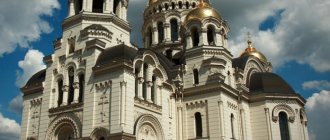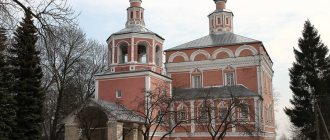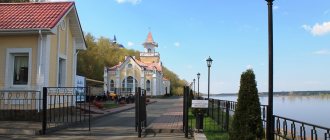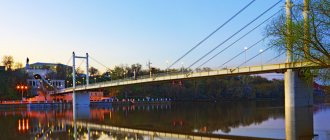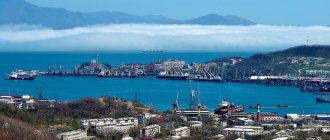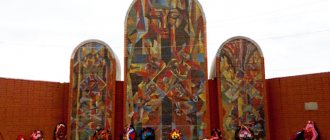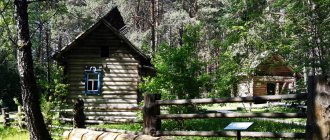Novocherkassk.net – Encyclopedia of Novocherkassk –
The city of Novocherkassk is known to many not only for its status as the capital of the Don Cossacks, but also for its historical and cultural value. The history of the city and the Cossacks, going back centuries, lives not only in the main attractions of Novocherkassk, but also in ordinary houses, streets and squares. Walking along the avenues and squares, you can easily imagine how carts and carriages once passed here, noble ladies walked, and simple boys played in the courtyards. History seems to come to life when you look at triumphal arches, ancient temples and noble mansions. Therefore, we suggest not only seeing the main attractions of Novocherkassk, but also taking a look at the city itself, its alleys, houses and courtyards.
You may also be interested in our following sections:
Monuments Museums Memorial plaques Theme “What should visitors visit?” Gallery
Novocherkassk Ascension Cathedral
History On the map Photos
Novocherkassk Ascension Cathedral is considered one of the most majestic in Russia, the third largest church building, second only to the Cathedral of Christ the Savior in Moscow and St. Isaac's Cathedral in St. Petersburg. Novocherkassk Cathedral is not only an Orthodox church, but also a historical monument of the Don Cossacks. His story is complex, but at the same time very interesting. More details
Patriarchal Ascension Cathedral Military Cossack Cathedral and Ermak Square
The main attraction is located in the city center - the Patriarchal Ascension Cathedral of the Cossack Military Cathedral, the third largest in Russia. The height of the cathedral is 74.6 m . The beginning of construction is the year the city was founded.
They designed and tried to build the cathedral twice. But due to weak soils and the presence of groundwater at shallow depths, the construction of such a massive structure could not be completed. Each time the cathedral collapsed; under the weight of its own mass it sank into the ground. The Cossacks decided to make the third and last attempt according to the project of A.A. Yashchenko. Construction was completed in 1904, and in 1905 the cathedral solemnly opened its massive carved doors in the presence of Nicholas II.
The cathedral is active, services are held in it, and the temple is beautifully decorated on church holidays. At night, the facades of the cathedral are illuminated by architectural lighting depicting scenes from the Bible. The main cross is decorated with rock crystal. In the basement of the cathedral, which has two tiers, baptisms are performed and the tomb is located. Marble sarcophagi store the remains of the founder of Novocherkassk M.I. Platov and other personalities significant for the history of the city. The interior of the cathedral is impressive: frescoes, paintings, and stained glass windows depict biblical scenes and pictures from the life of the Cossacks. Excellent acoustics can be enjoyed during festive services, which are accompanied by the singing of the church choir.
The cathedral is located on Ermak Square, paved with stone. There are also three monuments here. The first one, on the side of Ermak Avenue, is a monument to Ermak, the famous Don Cossack and conqueror of Siberia. It was opened in 1904 and has remained unchanged to this day.
On the other side of the cathedral in 1911. A monument to the hero of the Caucasian wars, Lieutenant General Ya.P. was opened, brought from St. Petersburg. Baklanov. His ashes are also kept in the cathedral crypt. The monument was heavily damaged during the First World War, but was completely restored in 1995.
On the side opposite the main entrance of the cathedral in 2005. a monument of reconciliation and harmony was erected, symbolizing the unity of the Cossacks and their reconciliation with their enemies.
Location: Ermaka Avenue.
Triumphal arches
History Photos Northern Arch on the map Western Arch on the map
The triumphal gates at the northeastern and southwestern entrances to Novocherkassk preserve the memory of the heroic participation of the Don Cossacks in the Patriotic War and foreign campaigns of 1812-1814. More details
Novocherkassk
Story
The history of Novocherkassk is inseparable from the history of the Don Cossacks as a whole. As you know, the Don Cossacks never knew serfdom and were a reliable support for the fatherland, capable of providing well-armed and combat-ready units for its defense in the shortest possible time.
The city was built precisely as the future capital of the Don Cossacks according to the project of the city planner Devolan in the best European traditions, with wide streets and boulevards, spacious squares with an indispensable church, and an abundance of greenery. Novocherkassk was founded on May 18 (30), 1805. Its founder and first chieftain was Matvey Platov, a future hero of the Patriotic War of 1812; Cossack regiments under his leadership reached the walls of Paris. The memory of the ataman was immortalized by his contemporaries in a number of monuments.
The further history of the city was quite dramatic. In the post-revolutionary period, the city changed hands several times and became the center of the white movement. The pavements of Novocherkassk perfectly remember both the clatter of hooves of the red horsemen and the cavalrymen - the White Guards. In January 1920, the city finally passed into the hands of the Bolsheviks and became a regional center. Since 1991, the process of reviving Novocherkassk as a historical and modern center of the Don Cossacks began, and in 1993 it was recognized as the world capital of the Cossacks.
Despite a very complex history, the occupation during the Great Patriotic War, Novocherkassk managed to preserve to this day the historical center of the city in the form in which it existed in the 19th century. Thanks to this, it can rightfully be classified as a museum city. It amazes with the abundance of various cathedrals and churches, which are kept in excellent condition, and monuments to their famous fellow countrymen. Among them, the monument to Don Ataman Ermak Timofeevich, created according to the design of the famous sculptor Mikeshin, stands out. The names of many outstanding writers are associated with Novocherkassk, the leading place among them belongs to Mikhail Sholokhov.
Attractions
Most local attractions are associated with the history of the Cossacks and the formation of the southern city.
Museum of the History of Viticulture and Winemaking
This museum is located at the Institute of Viticulture, on Baklanovsky Prospekt, at the exit towards Rostov. Here you can hide from the summer heat and refresh yourself with a glass or two of wine. The museum contains documents telling about the history of winemaking, as well as various recipes for preparing this drink. Naturally, there is a tasting room.
Old quarters
Novochek has preserved old quarters, which make the city a kind of open-air museum. Here you can see palaces, small mansions, and a beautiful square. The surrounding area is full of greenery, in the shade of which pensioners and loving couples hide.
Monuments
Monuments are literally scattered throughout the city. They are mainly associated with the Don and the Cossacks. The largest are the monument to the founder of the city, Count Platonov, the Cossack Ermak, and the hero of the Caucasian Wars, General Baklanov.
Most of the monuments were erected in the USSR in honor of the heroes of the revolution and civil war. Among them are monuments to Platov, as well as to Podtelkov and Krivoshlykov - these are the leaders of Soviet power in the Don.
Ascension Military Cathedral
This cathedral is a real decoration of Novocherkassk. It was founded in 1805, but it turned out that construction took a hundred years. It stretches 75 meters in height and is the third largest cathedral in Russia, behind the Cathedral of Christ the Savior and St. Isaac's Cathedral.
The cathedral is beautiful and inspiring with its splendor. In 2011, its domes were covered with gold sheets, and a rock crystal stone was inserted into the cross, which reflects the stars. At night the cathedral is illuminated and looks fantastic.
Ataman Palace
The Ataman Palace looks, as they say in the South, rich. Inside there are vaulted ceremonial halls, carved furniture, stucco moldings and paintings. In the courtyard there are paths, flower beds and a carved wooden gazebo.
Tsars and heirs to the throne stayed in the Ataman Palace. In Soviet times, government agencies such as the department of public education and the department of physical education were located here. In the 90s of the last century, everything unnecessary was removed from the palace and restoration was carried out.
Now on the first floor there are museum exhibitions, on the second there is a living room, a dining room, and the ataman’s office. The authorities plan to recreate the house Simeon Church, where materials about the work of the Don diocese will be placed.
Triumphal arches
There are two of them in the city: one is in the northeast, the other is in the southwest. They were built at the beginning of the 19th century in memory of the participation of the Don Cossacks in the Patriotic War and in foreign campaigns.
An unofficial version says that the arches were erected in honor of the arrival of Alexander I in the city. Since the Cossacks did not know which side he would enter Novocherkassk from, they played it safe and built two at once.
Accommodation
There are no ultra-exquisite hotels in Novocherkassk, but small hotels of the 2-3 “star” level are quite sufficient. Business class facilities offer luxury and junior suites with the necessary furniture, communications and a minibar. Hotels provide transfers, luggage storage, and secure parking. Here you can have lunch in the restaurant. Accommodation will cost from 1.5 to 3 thousand rubles per day.
Simpler hotels will cost about 1-2 thousand rubles. For example, Novocherkassk can accommodate 280 people. Such hotels are mainly located in quiet places in the city, which is very convenient - no noise, no fuss.
Nutrition
There are quite a few good cafes in the city; some of them are similar to restaurants in their interior and variety of dishes. Prices are low, even in establishments that operate in the center of Novocherkassk. That is, you can have lunch for 250-300 rubles.
Basically, the cafe offers dishes of European and Don cuisine. There are a variety of business lunches available, served from 1 to 3 p.m. It is worth trying Cossack cuisine in the city. For example, fish soup cooked with vodka, pies with fish and meat, various alcoholic liqueurs.
Transport
Novocherkassk is one of the first cities in the Rostov region where a tram appeared. There is a unique transport triangle here: the tram turns around and goes back, like a car, along one side of this figure.
There are also buses and minibuses in the city. Travel costs from 10 to 14 rubles, tram costs 8 rubles. Transport connects all areas of the city, traffic is good, without major congestion.
Souvenirs
In the souvenir shops you can find products made of wood and ceramics. Basically, these are mugs, saucers, plates with images of city attractions. There are towels with embroidered designs on a Cossack theme. Cossack caps and various military clothing are sold for men.
How to get there
Novocherkassk lies next to the Aksai and Tuzlov rivers, which divide the city in half. It borders on small rural areas, and at a distance lie Shakhty, Rostov, Bataysk and Novoshakhtinsk. Actually, from these cities you can get to Novochek.
The most convenient transport is a bus. For example, you fly or arrive by train to Rostov-on-Don, and from there you take a minibus or bus to Novocherkassk. You'll be there in an hour.
Monument to Ermak, conqueror of Siberia
History On the map Photos
This monument, installed on the cathedral square, is one of the symbols of Novocherkassk. Opening of the monument to sculptor V.A. Beklimishev took place on May 6, 1904. The four-meter sculpture is installed on a granite block. In his left hand Ermak has a marching banner, and in his right hand a crown, symbolizing the conquered Siberia that he presented to the Russian state. There are inscriptions on the monument: on the front side - “To Ermak - Donets. 1904” - and on the back: “Russia, history and the church proclaim eternal memory to Ermak” (quote from Karamzin) and “To the Don Ataman Ermak Timofeevich, the conqueror of Siberia, from grateful posterity in memory of the tercentenary of the Don Army, 1570-1870.” He ended his life in the waves of the Irtysh on August 5, 1584.”
More details
Monument to Franz Pavlovich de Volan
The opening of the monument took place in 2003. Franz Pavlovich de Volan - military engineer, lieutenant general, according to whose design the city was built. It is because of the similar layout of the two cities that Novocherkassk is called “little Paris”.
The “beams” of the main streets extend from Ermak Square: Platovsky and Ermak Avenues, Krasny Descent. Ermak Avenue abuts Trinity Square, from which Baklanovsky Avenue, Herzen Descent, Troitskaya Street, and Moskovskaya Street also radiate.
Location: Platovsky Avenue.
Monument to Ataman Baklanov
History On the map Photos
On the cathedral square there is another original monument to the Don hero, who won many high-profile victories in the Balkan and Caucasian wars - Yakov Petrovich Baklanov. This monument (architect N.V. Nabokov), funded by an all-Russian subscription, was first erected at Baklanov’s grave in St. Petersburg, where Yakov Petrovich lived in his last years and died. In 1911, a monument to Ya.P. Baklanov was moved to Novocherkassk and, with some changes to its base and pedestal, installed on the south side of the cathedral. More details
Museum of the History of the Don Cossacks
History On the map Photos
The Museum of the History of the Don Cossacks has a unique scientific library, which contains publications from the times of Peter the Great to the present day. There are many authentic things, manuscripts and books of scientists, literature and artists of the Don. Along with collections of archaeological objects, combat bladed weapons and firearms, coins and paper money, banners and standards, military uniforms and civilian clothing, including “Nekrasovites” who returned after many decades from Turkey to the Don, household items and furnishings mansions, the museum has large art collections of the St. Michael the Archangel Church funds not only of Don artists N.N. Dubovsky, I.I. Krylova, M.B. Grekova and others, but also paintings of Western European painting, collections of domestic and foreign crystal and porcelain (for example, Saxon, English, etc.). More details
Sights of the city of Novocherkassk with photos and descriptions
Novocherkassk is a very colorful city, home to more than two hundred historical and architectural monuments, nine of which have the status of objects of federal significance. Of course, most local attractions are closely connected with the history of the Don Cossacks.
Architecture of Novocherkassk
The old quarters of Novocherkassk with the architecture of the 19th century, made in the eclectic and modernist styles, amaze the imagination. The large space of the young city made it possible not to build densely, but to alternate it with green spaces, which made it possible to turn many buildings into original palaces and estates, which we can still see today.
- The Ataman Palace is one of the main attractions of the city. Until 1920, this building, made in the eclectic style, served as the residence of Cossack atamans and the highest persons of the state. Nowadays, this architectural monument is a branch of the Don Cossacks Museum.
- State Polytechnic University is a complex of buildings on Prosveshcheniya Street. The design of the buildings of this university was developed by the architect Roguysky in 1911, and their construction was completed only in the 1930s. Today these buildings have the status of architectural monuments.
- The Palace of Ceremonial Rites is a building erected at the end of the 19th century by the merchant Kiryunin. This beautiful building was called the “House of Happiness” until 1964. After restoration in the 1990s. The Wedding Palace was opened here.
- Kuznetsov Real School - this architectural object was built at the end of the 19th century on Atamanskaya Street. The building is made in the Byzantine style, its architect is V.I. Zuev. The corner façade was formerly decorated with a bell-shaped turret, which was demolished during the Soviet years. Today, city school No. 5 is located here.
Ataman Palace
A prominent place in the urban architecture of Novocherkassk is occupied by two triumphal arches, erected as a sign of the Cossacks’ merit in the War of 1812 and victory over Napoleon. They were built according to the design of the Moscow architect A. I. Rusk in 1817. These buildings greet tourists at the entrances to the city from the western and northeastern sides.
Churches and temples
In pre-revolutionary Novocherkassk, there were fourteen Orthodox churches, a Lutheran church and a Catholic church. Unfortunately, during the years of struggle against religion, several places of religious character were lost. Today, only eight churches have survived in which services are held.
- Ascension Cathedral is the central building of the architectural ensemble of Novocherkassk. This main Orthodox church of the Don Cossacks was founded at the founding of the city in 1805, but its construction took exactly 100 years. During construction, the building collapsed twice due to a weak foundation and haste, and was completed only the third time according to the project of Academician A. A. Yashchenko. The cathedral was closed by the Soviet authorities and reopened only in 1942 under the German occupation. For the 200th anniversary of the city, this building was restored and returned to its former majestic appearance.
- Michael the Archangel Church is one of the most beautiful buildings on Azov Square. It was erected in 1870 in the classic Russian style: with onion-shaped domes and barrel-shaped semi-columns.
- Assumption Church - this Catholic church was built by Polish architect Bronislaw Roguyski in 1906. During the Soviet period, the parish was closed, and the building was used as a canteen. Since 1994, the temple was returned to the Catholic community of Novocherkassk.
Ascension Cathedral
City museums
There are quite a lot of interesting museums in Novocherkassk that will introduce tourists to the history of the city and the Don Cossacks.
- The Museum of the History of the Don Cossacks was founded on November 22, 1899 through the efforts of “lovers of Don antiquity” in a building specially erected for this purpose. His collections were collected in all Cossack villages of the Don. During the Civil War, many exhibits were taken away, and they were returned only in 1947. Today, the museum complex's holdings include more than 115 thousand items, many of which have no analogues in the world.
- The Museum of the History of Viticulture and Winemaking was created in 1972 and introduces tourists to the history of the development of these crafts from antiquity to the present day. The collection includes copies of amphorae, silver lutheria and bowls, antique black-glazed utensils for drinking wine, and most importantly, varieties of local grapes. Of particular interest is the book of complaints and suggestions, in which you will see gratitude from foreign celebrities.
- The Museum of Memory of the Novocherkassk Tragedy of 1962 was opened with the support of the Soros Foundation in 2002. It tells the story of the sad events of government forces suppressing a strike by workers at an electric locomotive plant.
Museum of the History of the Don Cossacks
Museum of the History of Viticulture and Winemaking
Monuments
Statues and monuments are found everywhere in Novocherkassk. Conventionally, they can be divided into two large groups: the first is dedicated to the history of the Don Cossacks and prominent atamans, and the second is dedicated to the historical heritage of the USSR.
- Monument to Platov - dedicated to the ataman who founded Novocherkassk. It was created in 1853 by sculptor A.V. Tarasenko. In 1923, the sculpture was replaced by a monument to Lenin, and only 70 years later the famous founding father returned to his original place.
- The monument to Ermak is a unique sculpture dedicated to the famous Cossack chieftain who conquered Siberia. It was installed in 1904. Ermak Timofeevich is depicted standing at full height with a battle banner and the crown of Siberia in his hands. Today this monument is a cultural heritage site.
- The monument to the mass grave was erected at the burial site of the soldiers and officers who liberated Novocherkassk in 1943. The marble monument, on which the names of the victims are carved, was opened on the 50th anniversary of the Victory on the initiative of local authorities.
Monument to Platov
Other monuments of Novocherkassk:
- monument to Ataman Baklanov;
- bust of Suvorov;
- Monument to Reconciliation and Concord;
- Worship cross;
- monument to Yuri Gagarin;
- monument to aviators;
- memorial sign to the liquidators of the Chernobyl disaster;
- monument to Cossack horses.
Ataman Palace
On the map Photos
A two-story building in the classicist style. The Ataman Palace served as the residence of the military ataman, as well as the residence of the royal family who visited the city. These were Alexander II, Alexander III and Nicholas II. Design and construction were carried out by Academician I.O. Valprede in 1863. The rich decoration of the interior makes an indelible impression: state rooms with high vaulted ceilings, stucco moldings and paintings, huge marble fireplaces and carved furniture. Everything here points to the former presence of royalty. The courtyard adjacent to the back of the building in those days was decorated with flower beds and ornate paths, as well as a carved gazebo installed on a raised platform.
History of creation
The idea of moving the capital was not immediately supported by the Cossacks, who did not want to move from their homes to the steppe 20 miles from the Don shores. In addition, the high ground for the new settlement was devoid of suitable drinking water due to the turbidity of the surrounding rivers. However, Emperor Alexander I supported Platov, the Don people began to build up the new city strictly according to plan and turned it into the center of the Cossack elite - military atamans and officers. Until the end of the 1860s, the “non-service” population was prohibited by the highest decree from buying land and real estate in Novocherkassk, as well as from building industrial enterprises closer than 20 miles from it.
The natural relief of the high tract Biryuchiy Kut was successfully used in the development plan of Novocherkassk. The main elements of the design of the city center were the following avenues: Ermakovsky, Platovsky and Baklanovsky, connected by vast squares with streets radiating from them, which emphasizes the expressiveness of the ensemble solution and does not allow chaotic construction. The combination of buildings of classical styles with elements of Cossack pomp characterizes the original architectural appearance of the city. The sights of Novocherkassk include 200 officially recognized historical and architectural monuments.
Monument to Matvey Ivanovich Platov
History On the map Photos
The monument to the founder of Novocherkassk, Ataman Matvey Ivanovich Platov, was erected in 1853, by order of the Military Administration by Russian sculptors N.A. Tokarev, A.A. Ivanov and P.K. Klodt. Unfortunately, the original monument was lost in 1923 due to the arrival of the new government. The sculpture was removed and transferred to the museum, and in its place a sculpture of V.I. Lenin was erected. Forgotten in the museum archives, the monument to the founder of the city remained intact until 1930, when it was melted down during an all-Union campaign to assemble non-ferrous metals. It was recreated again in 1993 by Moscow artist A.V. Tarasenko. The original appearance of the monument has not been restored; now there is no openwork fence around the pedestal, no cannons in the corners. But despite this, the sculpture has not lost its historical value and “fighting spirit”, and attracts the attention of townspeople. More details
Alexander Garden
On the map Photos
The city park in Novocherkassk called “Alexandrovsky Garden” is located in the very center of the city, behind the building of the Ataman Palace. During the time of M.I. Platov, on the site of the garden there was a huge wasteland, which, as a rule, was used during various celebrations as a kind of arena for night illumination. The empty square was named Gostinodvorskaya. The Alexander Garden was founded on the site of Gostinodvorskaya Square by order and with the active participation of Ataman M.G. Khomutov in the early 1850s. The city garden immediately became a favorite walking place for Novocherkassk residents. By the way, the Alexander Garden of the Cossack capital was a place well known even to the most august guests of the city, among whom was Emperor Alexander III. An observation deck was built on the mound in the Alexander Garden, from which a wide panorama of the steppe environs of the city opened up. Many people came there to admire them.
Top 10 Novocherkassk attractions
The most important attraction in Novocherskassk is the Cathedral of the Ascension of the Lord. The Cossacks began its construction along with the foundation of the city, which was to become their capital.
In addition, there are many other interesting places in Novocherkassk:
- museums;
- parks;
- palaces;
- arches, etc.
Before traveling to Novocherkassk, it is better to plan in advance what to see and where to go. To make it easier for you to plan your route, I have prepared a list of the most popular attractions that you can visit in 1 day.
Cathedral of the Ascension
Construction of the Ascension Military Cathedral began in 1811, but the first visitors entered it only in 1905.
The domes of the temple are decorated with red gold, the main cross is decorated with rock crystal. Because of this, at any time of the day the cathedral seems to radiate light. In Russia, the temple is considered the third highest dome - they are located 74.6 m above the ground.
The floor of the cathedral is covered with marble, which in the past was delivered from Italy and France. The temple clock and interior have been preserved in the same form as they were originally.
Nizhny Pokrovsky Church
The tomb, in which there are marble sarcophagi, is called the Lower Church of the Intercession of the Blessed Virgin Mary. Matvey Platov, the founder of the city, is buried here. Vasily Orlov-Denisov and Pyotr Baklanov - heroes of the war of 1812 - also lie in this tomb, as do the remains of Archbishop John.
You will also like: Walking on the roofs of St. Petersburg: interesting places, rooftop tour
Baptist Church
In the 18th century Many Germans began to come to Russia for permanent residence. They needed a religious building, which was erected.
The Lutheran Church is different from Christian churches. According to the beliefs of Lutherans, not only services were held in the building - concerts were also held here. Since the 70s XX century the church was left without parishioners. But 20 years later, the Baptist community of Evangelical Christians restored the building. Services are now held here.
Ataman Palace
After its construction in 1863, the Palace of Atamans of the Don Army was used for its intended purpose. From here the management of the Cossack region was carried out. In 1918, Ataman Kaledin committed suicide in the palace.
Now the building houses a museum. All rooms of the palace have been reconstructed. The collections and historical documents placed will help you learn not only about the atamans who served the Fatherland in these parts, but also about their life.
Museum of Viticulture and Winemaking
The place was visited by Thor Heyerdahl, Sienkiewicz, cosmonaut Leonov and Marshal of the Soviet Union Grechko. The history of local winemaking began during the Khazar Kaganate.
Pushkin praised the wines produced on the Don in his works. Local craftsmen have received awards from our country and won international competitions.
Triumphal arches
The Don Cossacks accomplished many feats during the Patriotic War of 1812. Alexander I, in order to personally thank the heroes, went to their capital - Novocherkassk. He could only enter the city from both the northern and western sides, so Ataman Platov decided to erect 2 triumphal arches.
In the USSR, these monuments were considered of no interest to anyone, but now they have been completely restored according to the original drawings. Now they decorate the capital of the Don Cossacks. Everyone who comes here loves to take photographs.
Memorial "Mound of Glory"
In 1980, a memorial was solemnly opened in Alexander Park in memory of all who fought for our Motherland during the Great Patriotic War. The monument reminds that no one should forget the feat of the Soviet people and individual heroes.
Grove "Red Spring"
The history of this beautiful corner of nature began at the end of the 19th century. Then the first trees appeared here. They were landed by order of Ataman Krasnokutsky. Under Soviet rule, the place began to be called “Red Spring”.
You will also like: Where to go in St. Petersburg - entertainment: go with a girlfriend, friends, a large group, inexpensive and interesting
The grove is located near Novocherkassk in the west. Nowadays it has been given the status of a natural monument. Citizens spend their free time here on weekends. On the territory of the grove there are 2 sports grounds and a play area for children.
Alexander Garden
In 1850, Ataman Khomutov decided to build a park on the territory of Gostinodvorskaya Square. In the Alexander Garden there is a mound from which a beautiful view of the surrounding area opens.
Emperor Alexander III, after whom the garden is named, loved to come here and visit the observation deck. Moreover, the Ataman Palace, where Russian royalty stayed, is located nearby. You can walk here and have a photo shoot today.
Park "Cossack"
Initially the park was called “Pervomaisky”. It was built by townspeople working on subbotniks. The park was opened in 1970 on the May holidays in the hope that it would become a favorite place for children.
Now the name has been changed to “Cossack”. It has the largest number of interesting attractions in the city and is crowded not only on weekends, but also on weekdays.
mound of Glory
On the map Photos
The memorial complex “Mound of Glory” is located in Alexander Park and is dedicated to the townspeople who died in the Great Patriotic War. In the battles for the liberation of Novocherkassk in 1943, 900 people died. Before the revolution, on the site of the “Mound of Glory” there was a simple observation deck. With the advent of Soviet power in Novocherkassk, the Alexander Garden was renamed the “City Park of Culture and Recreation,” and in 1980, on the 35th anniversary of the celebration of Victory in the Great Patriotic War, this memorial complex was built on the site of an ancient mound and observation deck. At the foot of the “Mound of Glory” there is an alley of hero cities of the Great Patriotic War, as well as two memorial stones: to soldiers of world and local wars, and to victims of the Chernobyl nuclear power plant disaster.
Where to go in Novocherkassk
Tired of sightseeing in Novocherkassk, you can diversify your active leisure time by visiting:
- water park "Oasis" in the historical center of the city on the territory of the Alexander Garden, accommodates 500 people;
- Pride family entertainment center with a climbing wall of varying difficulty and children's playrooms;
- Higher Level paintball club with the latest equipment, various fields and comfortable recreation areas;
- amusement park Regatta;
- Tolokonnikov's private Ginkgo Park in an abandoned clay quarry;
- a variety of cafes, restaurants and karaoke clubs.
Don Drama and Comedy Theater named after. V. F. Komissarzhevskaya
History On the map Photos
The history of the Novocherkassk Theater begins in 1825, and in reality since 1859. The first date is connected with the fact that “since 1825, a small theater was opened in Novocherkassk, where a troupe of actors who come here from Taganrog at different times performs.” But the modern theater was built only in 1866, according to the design of the architect A. A. Campioni. Vera Fedorovna Komissarzhevskaya, after whom the theater is named, worked in Novocherkassk for only 167 days, playing 58 roles during this time. But even this short period of her development as an actress remained forever in the memory of Novocherkassk theatergoers. Vera Feodorovna’s entire stage life turned out to be short-lived. She died of smallpox in 1910 while on tour in Baku. More details
Central Library named after. A.S. Pushkin (former Officers' Assembly)
On the map Photos
The library moved to the building of the former Officers' Assembly with the advent of Soviet power in 1920. Built for the Don Cossack Army in 1890, it was truly unique. The building of the former officers' meeting is one of the most significant buildings in Novocherkassk at the end of the 19th century. It acquired its final appearance as a result of the reconstruction of the house and the appearance of an extension on a plot purchased nearby at the intersection of Moskovskaya and Komitetskaya streets. The building was built in a style typical of the architecture of the 17th-19th centuries. classicism style, which is characterized by strict forms of facades and decorative stucco and iron decorations, rounded windows. The main hall was intended for celebrations and meetings.
South Russian State Polytechnic University
On the map Photos
Novocherkassk Polytechnic Institute is the largest university in the South of Russia. The complex of buildings of the institute, built according to the design of the architect Roguisky, is an architectural monument and amazes with its majesty and beauty. The resolution of the Council of Ministers of Russia, adopted in January 1907, provided for “the establishment of a polytechnic institute in Novocherkassk, using funds and personnel of the Warsaw Polytechnic for this purpose.” Student riots of 1905-1906 led to the temporary closure of the Warsaw (Russian) Polytechnic Institute by the authorities of the Russian Empire, and its leading employees were sent to Novocherkassk and formed the core of the teaching staff of the new institute. The institute was opened on October 5, 1907. At that time, the institute did not yet have its own buildings and was located in seven buildings in the city, remote from each other. Construction of the buildings began on October 9, 1911. The project included four buildings and was completed in 1930.
More details
Alexander Nevsky Church
On the map Photos
The church, designed by the architect Lavopierre, was built wooden, and therefore temporary, so its construction took little time. On June 29, 1810, Archpriest Alexey Oridovsky consecrated the newly built church. There was only one throne in the Alexander Nevsky Church, in honor of the holy noble prince Alexander Nevsky. In 1822, one of the residents of Novocherkassk, “who loves the splendor of the house of the Lord,” added a chapel to the church in the name of St. Great Martyr Paraskeva Pyatnitsa, consecrated on October 26 of the same year by Archpriest Jacob Merkhalev. December 22, 1896 The last liturgy was celebrated in the old wooden Alexander Nevsky Church, during which priest Vasily Petrov made a heartfelt speech about love for his temple, which for 86 years was the center of the spiritual life of many people. In 1898, the low, gloomy, cold and dark old church was dismantled and transported to the Mishkin village of the Novocherkassk village, where a new church was built from this material, consecrated on November 12, 1900. The new Alexander Nevsky Church, built behind the Alexander Garden (now the city park), was built, like the Ascension Cathedral, in the New Byzantine style, one-story, with a semicircle in the altar, behind which there is a room for the sacristy. The temple can accommodate up to 1,500 people for one service. The main dome inside is decorated with a picturesque image of the God of Hosts, and the semi-domes and walls of the temple are decorated with images of events from sacred history and the faces of saints, as well as sacred sayings. An iron staircase leads to the bell tower. The outside of the church was whitewashed, and plaster was placed only around the windows and doors. The inside of the temple was completely plastered, painted with oil paint and decorated with paintings.
St. George's Church
On the map Photos
St. George's Church was built on Kolodeznaya Square in Novocherkassk in 1898 in memory of the miraculous rescue of Sovereign Emperor Alexander III and His august family during the crash of the royal train on October 17, 1888. Arch. V.N. Kulikov drew up a project, taking the church in the village of Nizhne-Chirskaya as a model. The church was built in the Russian style on a sloping site towards the Tuzlov River. Instead of a bell tower, an original belfry was built above the refectory. The capacity of the temple is 400 people. The temple was built with private donations and cost 17 thousand rubles. The largest contribution was made by the widow of the cornet F.V. Kashcheev. The iconostasis was made in the workshop of A. Solovyov, window frames and crosses from shaped iron - in the workshop of T.H. Fasler. The consecration of the temple took place on October 18, 1898. In 1939, the temple was closed. In the post-war years it was used as a granary. At the end of the 1940s. the temple was returned to the Church and became operational again. Its restoration began in 1990. The temple preserves the shrines that have been there since its construction: icons of St. blg. book Alexander Nevsky in a silver frame, St. Panteleimon the Healer of the Athonite script. Of particular interest is the miniature wall iconostasis with paintings from the academic school. The original work is the cast iron bas-relief “The Last Supper”, a copy of the famous fresco by Leonardo da Vinci. In October 2000, St. George's Church acquired a new shrine - the icon “It is Worthy to Eat”, a copy of the myrrh-streaming icon from St. Mount Athos.
St. Michael the Archangel Church
On the map Photos
A stone church designed by local architect Yakov Sedov was built on the main Platovsky Avenue on the territory of the Azov Bazaar in 1870 and consecrated in 1872. Archbishop Platon of Don and Novocherkassk participated in the consecration. It was a two-tiered brick church with chapels: on the top floor, the right chapel in honor of the Vladimir Icon of the Mother of God and the left in honor of the Cathedral of John the Baptist. On the lower floor the main altar is Panteleimon's, with a chapel on the right side in the name of St. Father Simeon the Holy Fool and John the Faster. In 1906, on the initiative and at the expense of the church elder P.P. Derepatskov. repairs were made, and the temple's paintings were updated. At the same time, church and parish guardianship was organized. The further fate of the Archangel Michael Church is similar to the fate of other outlying city parish churches. Most likely, it was closed just like the others, in 1935. According to some reports, it started working again in 1943. According to some stories, the temple was allegedly closed again in 1960, during another mass atheist campaign. A new stage in the revival of the Archangel Michael Church began in the early 90s.
Patriarchal Ascension Military All-Cossack Cathedral
The main attraction of Novocherkassk, called the “second sun of the Don,” the cathedral was founded on the central square on the Feast of the Ascension of the Lord in May 1805. The first version of the temple, designed by Luigi Ruschi, began to be built only in 1811 by his brother Jerome. After the brothers' resignation, the work was continued by the military architect, representative of the Moscow school, Mikhail Amvrosimov, until his death in 1825. During the construction of the dome in 1846, part of the building collapsed, but miraculously no one was injured. The second collapse of the unfinished temple happened under the local architect Ivan Valpred in 1863 and, fortunately, also without casualties. The reasons for the failures were: embezzlement of funds, poor-quality building materials, weak foundations, haste in the work. As a result of unsuccessful attempts, the ruins of the cathedral were dismantled, and in 1891, under the supervision of the construction commission, the third project of regional urban planner Alexander Yashchenko began to be implemented, who, after his death, was replaced by military architect Ilya Zlobin. During the construction of the temple, the plan was refined several times and, finally, in 1905, 100 years later, Ataman Platov’s dream became a reality.
In size and beauty, the Ascension Cathedral is second only to the Cathedral of Christ the Savior and St. Isaac's Cathedral. It is the highest point of the city’s architectural ensemble and has the following characteristics:
- neo-Byzantine style;
- 74.7 m high;
- capacity 5,000 people;
- domes covered with red gold;
- original main cross with Bohemian rock crystal inlays;
- tower clock on the bell tower;
- deep basements;
- a 30 m long underground passage to the bishop's house;
- unique ventilation and heating device;
- finishing with European marble;
- magnificent frescoes and paintings.
The marble sarcophagi of the temple contain the remains of M.I. Platov, heroes of the war of 1812, Archbishop John. The building was restored for the 200th anniversary of the city. In 2014, it was given the name of the Patriarchal Cathedral, the second after the Assumption Cathedral in the Moscow Kremlin, which also has the status of Patriarchal.
Temple of Constantine and Helena
On the map Photos
The stone Constantine-Eleninsky Church was built in the fall of 1906, but was consecrated only on May 10, 1909 by the cathedral archpriest Vasily Petrov. Three altars were built in it: in the name of the Holy Spirit and two side altars. The left one is in the name of Equal-to-the-Apostles Constantine and his mother Helen: and the right one is in the name of St. Nicholas of Myra-Lycia, the miracle worker. The temple was built in the Old Russian style. The square church is connected to a high stone bell tower. Many icons in the temple were painted by the Don icon painter M. Volkov. After the German occupation and liberation of Novocherkassk, the church was active. In the 70s, 80s and 90s the Church of Constantine and Helena worked. In the early 90s, the crosses and domes under them were gilded on the temple. Nowadays the church has a two-tier iconostasis.
Museum of M. B. Grekov
History On the map Photos
At the request of the public of Novocherkassk and the Rostov region, the Council of Ministers of the RSFSR established the M.B. House-Museum in the city. Grekov as a branch of the Museum of the History of the Don Cossacks. In the year of the 75th anniversary of the artist’s birth, June 30, 1957 at 16:00 on Grekova Street (until 1938 it was called Peschanaya Street) the grand opening of the House-Museum of the battle painter Mitrofan Borisovich Grekov took place. The House-Museum complex included: the residential building of M.B. Grekova of 6 rooms with a veranda, an outbuilding and a courtyard going down to the Tuzlov River. The following year, 1958, to the House-Museum of M.B. Grekov received a huge gift of 400 sketches by Mitrofan Borisovich, transferred from Moscow by the artist’s widow Antonina Leonidovna. In 1959 A.L. Grekova donated her husband’s personal belongings, sketches and other sketches to the museum. They made their contribution to the development of the M.B. House-Museum. Grekova are his friends and comrades. More details
Monuments of Cathedral Square
Ermak Square is also called Cathedral Square by local residents. It is surrounded by several significant sights of the city of Novocherkassk:
- Monument to Ermak - with the crown of Siberia and a banner in his hands, erected in 1804; authors M. Mikeshin, V. Beklemishev.
- The monument to Baklanov - in honor of the lieutenant general, the “thunderstorm of the Caucasus”, an outstanding military ataman, was erected according to Gavrilov’s design in 1911 in the form of a granite rock with a battle banner, a Cossack cloak, a hat and a hero’s saber.
- The Monument of Reconciliation and Harmony is a monument to modern history (2005) by A. Sknarin and I. Zhukov in the form of memorial plates with the names of Cossack regiments and a woman with a boy soldier in the center, symbolizing the unification of Cossacks with different political views.
- The Platov Monument is one of two monuments to the founder of the city; The equestrian statue was erected for the 250th anniversary of the birth of the great leader of the Don Army, authors A. Sknarin, I. Zhukov.
House-Museum of I. I. Krylov
History On the map Photos
Another branch of the Museum of the History of the Don Cossacks in the city of Novocherkassk was the House-Museum of the landscape artist Ivan Ivanovich Krylov, opened in 1979 on the corner of the street. Budennovskaya (formerly Gorodovaya) and st. Krylova (formerly Sennaya) with a modern exhibition hall.
I.I. Krylov was born in 1861 in the village of Elizavetenskaya into the family of a Don Cossack. After graduating from the Novocherkassk men's gymnasium, he entered the St. Petersburg Academy of Arts, where he graduated with four silver medals in 1887. For many years, the artist I.I. Krylov was a full member of the Moscow and St. Petersburg societies of painting lovers, took an active part in numerous painting exhibitions in Russia and abroad.
More details
